
Getting Facebook ad ROI isn’t always easy.
It takes trial and tribulation - and, frankly, most people lose money at first.
But what if you could all but guarantee a strong ROI from the start? Or, if you’re already running positive ROI ads, what if you could get even more money from them?
Well, you can. And I’m about to tell you how.
So if you’re an eCommerce store owner who’s trying to figure out how to decrease CPC and increase ad ROI, you’re in the right place.
In this article, I lay down a step-by-step process to teach you how to find influencers, how to choose the right one for your business, and how to reach out to them about FB ads.
But before we get into all that, let’s talk about why using influencers has such a profound impact on Facebook ad ROI.
How do influencers supercharge Facebook ad ROI?
It doesn’t matter what industry you’re in, or what campaign objective you’re using; with Facebook ads, the end goal is always to maximize your revenue generated with a limited budget.
And in order to do that, you need to ensure that your ads are engaging.
The more likes, comment, shares, and clicks on your ad, the lower your Cost Per Click (CPC) and Cost Per Action (CPA) will be.
Here’s where the influencers come in:
Since they have plenty of followers who engage with them on a regular basis, it makes sense that creating Facebook ad content involving these influencers will help you increase your ROI on Facebook ads.
Pro Tip: If you’re just getting started with Facebook ads, make sure you’ve got your Facebook Pixel installed properly or else you’ll be missing out on FB’s algorithm optimizations.
Now that we’ve gotten that out of the way, let’s move on to the first step of the process: finding influencers!
Step #1: Finding Influencers to Work With
Here’s a little trick that I use to scour Instagram for influencers.
Go to the search bar on Instagram, and then type in “#sponsored”.
There’s literally over a million posts which are tagged with this hashtag - meaning you have a huge pool of candidates at your fingertips.
Other similar hashtags include “#sp”, “#ad”, and “#advertorial”.
There are also industry-specific hashtags, including “#sponsoredathlete”, “#sponsoredgamer”, and more.
I also like to use this influencer search engine, which is an awesome platform that aggregates influencers from around the globe.

With Influence.co, you can search for influencers according to category, location, and follower count, and you can even check out statistics on the average cost per post in whatever country you’re looking at.
Here’s the best part:
You can sign up for a basic account for free. (Yup, you don’t even need to eat into your ad budget!)
Great - you’re now up to speed on how to look for influencers.
The next step is sifting through all the influencers you’ve found and deciding who you’d like to work with!
Step #2: Evaluating Influencers
Most eCommerce store owners who are looking to work with influencers take two key factors into consideration: their number of followers, and their rate.
Influencer A has 50,000 followers, and charges $200 per post.
Influencer B has 40,000 followers, and charges $300 per post.
It’s obvious which will give you a better deal, right?
Actually - not quite!
There are a handful of other factors to take into consideration when you’re looking for an influencer to work with.
Let’s start off with the first factor: their engagement rate!
Engagement Rate
Rather than just looking at each influencer’s number of followers, you should be looking at their engagement rate as well.
Continuing our previous example, let’s say that influencer A has a 0.05% engagement rate, and influencer B has a 1% engagement rate.
Here’s what this means:
Even though influencer A has 50,000 followers, their posts get only 250 Likes and comments on average.
And whilst influencer B might only have 40,000 followers, they get an average of 400 Likes and comments on their posts.
More engagement = more eyeballs on your brand = more brand awareness.
Makes sense, doesn’t it?
Growth Trajectory
Okay, this is a pretty fancy term, but it basically just refers to how quickly your influencer shot to fame.
I’ll explain why this matters in a second, but for now, here’s what you need to do:
Go to Social Blade and enter your influencer’s YouTube, Twitter or Instagram handle.
Then scroll down, and look at the graph that pops up.

If there are plenty of sharp dips and increases, that’s not a good sign.
It’s highly unlikely that 20,000 people on Instagram will decide to follow or unfollow a specific influencer at any given point in time... and whilst we can’t say this for sure, it’s highly likely that these people bought followers, and Instagram subsequently purged these fake accounts.
Whatever it is, I recommend avoiding these influencers like the plague.
Instead, you should be working with influencers who have a very natural, organic-looking graph:

Go ahead and bookmark Social Blade - you’ll want to always look influencers up with this tool, to be sure that you’re not getting scammed of your hard-earned money!
Comments on posts
Even if your influencer has a nice, gentle graph, this doesn’t mean they’re in the clear.
They could simply be employing more sophisticated techniques, such as buying a small quantity of followers everyday over a prolonged period of time, which gives the illusion of an organically growing follower base.
To minimize the chances of foul play, look at the comments on your influencer’s posts.
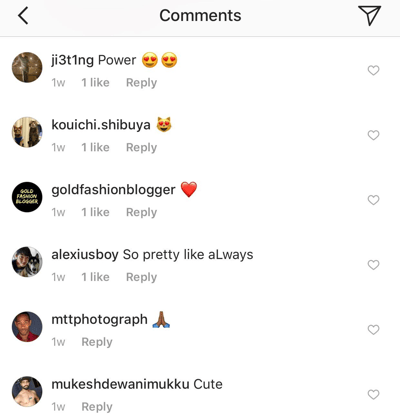
If the majority of the comments sound generic (“Cute”, “Pretty”, etc), that’s a red flag.
Now, I’m not saying that this is a sure indication that your influencer is buying followers.
It could simply be that they’re getting a lot of low-quality traffic because they use hashtags (the more of these you use, the more you attract accounts which use bots to Like or comment on your photos).
Either way, low-quality traffic is low-quality traffic. And we don’t want any of that!
Authenticity
We’ve talked at length about how to filter out influencers who artificially inflate their numbers.
But here’s the tricky part:
Even after crossing all these people off the list, it doesn’t mean that everyone you’re left with is automatically a good fit for your brand.
I won’t insult your intelligence by telling you to consider the obvious stuff…
You already know that you should be working with influencers whose followers have the same profile as your target audience, and all that jazz.
But here’s something else to think about as well:
Ideally speaking, you’ll want to work with an influencer that comes across as authentic (instead of someone who accepts sponsorships indiscriminately).
How do you gauge if an influencer is authentic?
First, you can look at the ratio of their sponsored to non-sponsored posts.
If pretty much all of their posts are sponsored, it’s highly likely that their followers will perceive them as being less authentic, and they’ll probably dismiss the products plugged by this influencer as “just another sponsored item” (as opposed to a product which the influencer is genuinely recommending).
Also, look at how the influencer frames their sponsored posts.
Do they take the time to craft a compelling backstory that appeals to their followers?
Or do they simply do the whole “My outfit is from genericfashionwebsite.com, get 20% off with my promo code” spiel?
Again, the less effort that the influencer puts into this, the more apathetic you can expect their followers to be.
At the end of the day, you want to work with an influencer who takes pride in the content that they produce (even if it’s something as simple as an Instagram picture and caption), and not someone who will do the bare minimum to market your brand!
Step #3: Reaching Out to Influencers
Simple: just email them!
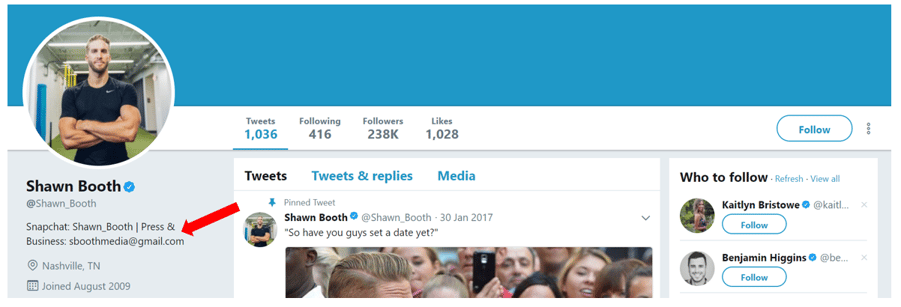
Most influencers put their email addresses in their social media bios, so that’s straightforward enough.
I also know some eCommerce store owners who like to Tweet at or Direct Message influencers, but I’d recommend sticking with email.
Some influencers get hundreds of random people (okay, they’re probably fans) DM-ing them or Tweeting at them every day, and you wouldn’t want your business proposal to be buried in a pile of irrelevant messages that will go unread!
Plus, here are the details you should include when emailing your influencer:
- A one or two-liner about yourself and your company (not an entire essay)
- What you’d like the influencer to promote
- Key deliverables (Blog post? Instagram post? YouTube video?)
- Deadlines to keep in mind, and
- Why you’d like to work with this influencer
Here’s a template that you can use:
Hi {Name},
This is {Name} from {Company} - we sell {product or service offering}. I’m reaching out to you today to see if you’re interested in helping us promote our {product or service offering} via {channel}.
Here are more details:
{Campaign launch date, deliverables, etc}
We particularly enjoyed the work that you’ve done with {past campaign/client} - it was awesome how you {reference campaign details}.
If you’re available, we’d love to set up a call and discuss some of the finer points of this collaboration. Does {insert date & time} work for you? If not, feel free to suggest an alternative date.
Best,
{Name}.
Here’s what you shouldn’t do:
- Send generic copy-paste messages to all the influencers you’re emailing
- Ask influencers to give out free shout-outs (if you’re talking to micro-influencers, and you’re offering to send them your product in return for a shout-out, this strategy might just work. Otherwise, forget it).
- End your email unambiguously, without leaving your contact details and/or telling them what the next step should be.
Step #4: Crafting Your Campaign
Now that you’ve got all the researching and emailing out of the way, it’s finally time to craft your campaign!
First, a word of advice:
Be open to your influencer’s suggestions - they’re making a living through creating content and engaging their followers, so they definitely know what’s up.
In fact, I recommend asking your influencer to briefly run you through the major campaigns they’ve worked on in the past.
Ask them the following questions:
- Which campaigns were the most successful?
- Why were they successful?
- Which campaigns were a flop?
- Why did they perform poorly?
It pays to do a bit of homework so you know what pitfalls you should avoid and what best practices you should replicate!
Here’s another tip:
When deciding on what type of content to co-create with your influencer, think about what questions you get (from your customers!) the most.
If you’re a fashion eCommerce store and always get questions about sizing?
Create a video featuring three influencers (one a size 6, one a size 8, and one a size 12) trying your clothes, and talking about how they fit.
If you’re an eCommerce store selling snacks, and you always get enquiries about your low-calorie granola bars?
Get a foodie blogger to demonstrate three low-calorie recipes and talk about your range of low-calorie snacks while they’re at it.
You might have to brainstorm a bit before you have that “Eureka” moment - so set aside a few hour and tap into those creative juices.
To help you get started, here are some broad categories of co-created content:
Tips and tricks
If you’re working with an influencer who has quite a bit of expertise and background knowledge, consider creating informational articles or videos which showcase tips and tricks.
For example:
An eCommerce store selling kitchen appliances can co-create content such as 7 Nifty Hacks To Upgrade Your Kitchen (As Revealed By Professional Cooks).
An eCommerce store selling inspirational journals and diaries can co-create content such as A Step By Step Guide On Creating A Vision Board.
Challenges
For a fun twist on things, pit two influencers against each other and see who performs better on a challenge.
For example:
If you’re an eCommerce store that sells socks, have your influencers each design a pair of socks and let the public decide which they like more. (There’s no ad format that will allow you to vote directly on Facebook, but you can have your viewers vote on a landing page).
Personal Content
This last category is pretty vague and open to interpretation, but just bear this in mind: the more personal your co-created content, the more likely fans will bite.
The key is to work with an influencer who doesn’t mind sharing openly and candidly about their life - if you can do that, your options are endless.
If you own a makeup brand, for example, get your influencer to film a “Boyfriend Did My Makeup” video, peppering it with plenty of cute anecdotes of how they got together.
Step #5: Putting Up Ads And Maximizing Facebook Ad ROI
Once you’re done co-creating the content, it’s time to think about distribution.
This is fairly straightforward:
If you have a video, run video ads on Facebook.
If you have an article or any sort of written content, run ads to send visitors to your website.
I’m assuming that you already have your basic targeting (age range, gender, location) in place, but for best results, I suggest that you try to further narrow down your audience to people who are fans of your influencer.
Let’s say you’re engaging the famous YouTuber, Michelle Phan, to work on a campaign for your eCommerce store.
Under your ad set, specify that you want your ads to be shown to people who have expressed an interest in her.
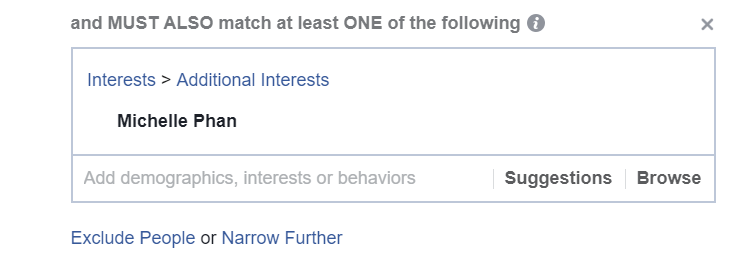
Pro Tip: If you’re working with influencers who aren’t famous enough, you might not be able to target their fans on Facebook. In that case, try and get creative with your targeting.
For example:
Let’s say you’re working with AlisonLovesJB, who’s a lot less well-known than Michelle Phan.
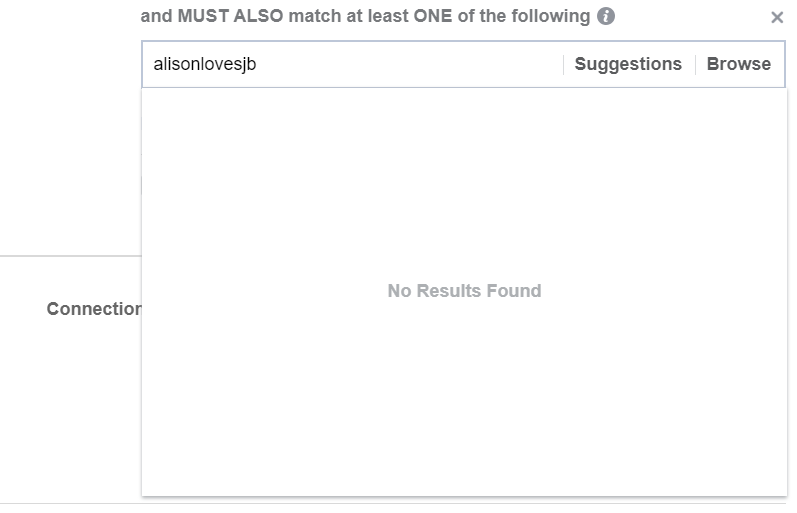
Because she has less fans, you don’t have the option to target her fans on Facebook.
But you know she’s a beauty vlogger, and that her fans are predominantly women who love shopping at Sephora.
That’s your answer right there - go ahead and target fans of Sephora!
Another tip:
You want to pack on as much social proof as possible, so be sure to tag your influencer in the ad.
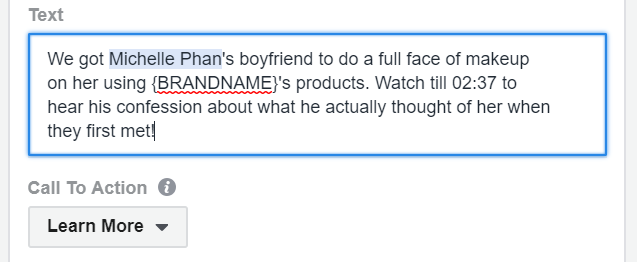
Request that they share the post on their Facebook page - if you can get them to comment with a reply (eg “Thanks {BRANDNAME}, this was so much fun!”), that’s even better.
Bonus: Tap Into The Power Of Your In-house Influencers
In-house influencers are your employees.
Chances are, the people that work for you have at least a small following. Even if they don’t, Facebook’s algorithm shows engaging content to more people - so if you have your employees engage with (like, share, comment on) your Facebook posts, they’ll be shows to more people!
This is called employee advocacy, and it’s a major trend happening right now.
How it works is simple: Any time you publish a new blog post, or any time a publisher mentions your company in the press, send it to all your employees so they can share it with their own audience members.
You can do this automatically with Smarp. It gives your employees accounts where they can automatically get a feed of everything your company is posting.
Plus, it comes with a built-in analytics dashboard:
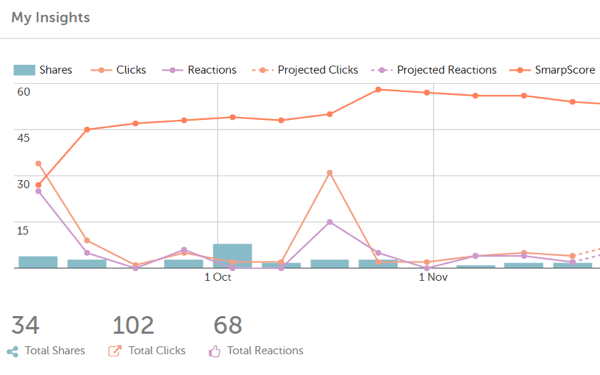
On top of the standard social media metrics (eg post engagement and reach), Smarp also tracks earned media value (EMV).
EMV is essentially what you would have paid to drive similar impact using influencer campaigns, and it’s a great way to quantify your results and track the ROI of your employee advocacy program.
If you’re looking to reduce your media spend on Facebook without compromising on reach, knowing the EMV of your advocacy efforts can help a great deal.
Pro Tip: Smarp already comes with a cool gamified leaderboard which ranks employees based on their sharing performance, but I recommend going a step further in incentivizing your employees.
It doesn’t have to cost a lot, either.
You can have a Hall of Fame in your office (a physical one, which will create more impact than a virtual leaderboard!) where you recognize your “Influencer of the month” or “Hustler of the month”.
Also, talk to your employees about how sharing content isn’t just about sharing content (and how it helps to build your company’s reputation and culture).
Now, taking the time to motivate your employees and get them to share your content might seem like an unnecessary step, but trust me on this one:
If you manage to get your employees invested, it’ll go a long way in magnifying all of your outreach efforts.
A final word on using influencers to boost your Facebook Ad ROI
Facebook is a great way for eCommerce stores to drive sales - there’s no doubt about that.
But in this day and age, competition is insanely stiff, and you simply can’t afford to be lazy with your ads.
So here’s the good news:
You’re already on the platform where all your potential customers are spending their time.
And you’ve already set aside the marketing budget to reach out to these customers.
The only part of the puzzle that’s left?
To create ads so compelling, these customers can’t help but click. (And that’s where ads featuring influencer content come into play!)
It’s time to start working with those influencers, creating some kickass content, and giving your Facebook ad ROI a massive boost. Be sure to let me know how it goes!
If you liked this article, please take a second to share it with your entrepreneur friends!
Bill Widmer is a content marketing and SEO expert who develops world-class content that ranks. He has appeared in top publications including Social Media Examiner, Content Marketing Institute, and the EOfire Podcast.





Leave a reply or comment below